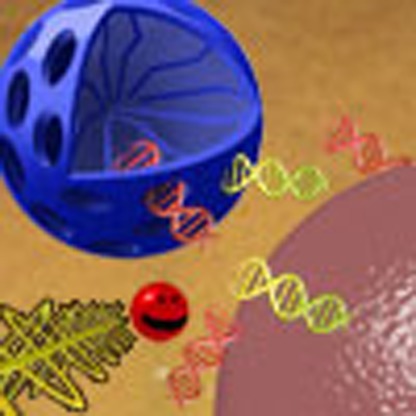- Record: found
- Abstract: found
- Article: found
Highly specific in vivo gene delivery for p53-mediated apoptosis and genetic photodynamic therapies of tumour

Read this article at
Abstract
Anticancer therapies are often compromised by nonspecific effects and challenged by tumour environments’ inherent physicochemical and biological characteristics. Often, therapeutic effect can be increased by addressing multiple parameters simultaneously. Here we report on exploiting extravasation due to inherent vascular leakiness for the delivery of a pH-sensitive polymer carrier. Tumours’ acidic microenvironment instigates a charge reversal that promotes cellular internalization where endosomes destabilize and gene delivery is achieved. We assess our carrier with an aggressive non-small cell lung carcinoma (NSCLC) in vivo model and achieve >30% transfection efficiency via systemic delivery. Rejuvenation of the p53 apoptotic pathway as well as expression of KillerRed protein for sensitization in photodynamic therapy (PDT) is accomplished. A single administration greatly suppresses tumour growth and extends median animal survival from 28 days in control subjects to 68 days. The carrier has capacity for multiple payloads for greater therapeutic response where inter-individual variability can compromise efficacy.
Abstract
 Alterations of p53 are associated with more than half of all human cancers. Here the
authors present a new pH-sensitive nanoparticle that is delivered via systemic circulation
and combines gene delivery to restore p53 with expression of Killerred protein to
induce photosensitization.
Alterations of p53 are associated with more than half of all human cancers. Here the
authors present a new pH-sensitive nanoparticle that is delivered via systemic circulation
and combines gene delivery to restore p53 with expression of Killerred protein to
induce photosensitization.
Related collections
Most cited references31
- Record: found
- Abstract: found
- Article: not found
p53 mutations in human cancers.
- Record: found
- Abstract: found
- Article: not found
When mutants gain new powers: news from the mutant p53 field.
- Record: found
- Abstract: found
- Article: not found